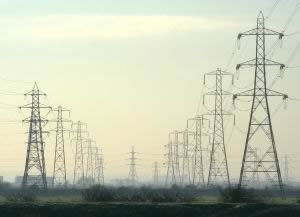 |
|||||||||
|
|||||||||||||||||||
|
|
Electricity
Line
Inquiry Told to Examine Alternatives 11/04/07 Scotland’s two major land managers’ organisations are telling the public inquiry into the proposed new electricity transmission line between Beauly and Denny that a detailed comparison between overhead pylons and underground cabling must be made given the impact an overhead line could have on the Scottish countryside.
The strong points are made in a submission being sent to the inquiry by NFUS and the Scottish Rural Property and Business Association (SRPBA). The public inquiry is focussing on the detail of the proposed new 400,000 volt electricity transmission line being developed by Scottish and Southern Energy and Scottish Power. The development comprises a transmission line of 135 miles (220 kilometres) with 600 pylons mostly over 50 metres tall running between Beauly, near Inverness and Denny, near Stirling. The public inquiry began on 6 February and continues throughout 2007. Both NFUS and SRPBA recognise the need for additional transmission capacity to support renewable energy developments, particularly in the Highlands. However, it is questioning the proposed overhead line in the absence of a proper comparison with underground cables. NFUS Vice President Nigel Miller said: “Before we erect 600 pylons each around the height of the Scott Monument, every single alternative must be looked at. Unless we can see evidence that overhead lines are the only viable option, we can’t support them. And we haven’t seen that evidence yet. “We are not questioning the need to develop renewable energy projects and there is real potential across the North of Scotland and on the islands to do that. Nor are we questioning the need to increase transmission capacity to take the electricity generated to where the customers are. However, we have real concerns at the impact on the countryside of the proposed line. “This will be one of the largest industrial developments the Highlands has ever seen, so time needs to be taken to ensure a proper analysis of the options are done. Our members in areas the line is proposed to go through deserve nothing less. We know underground cabling is more costly, but this cost needs to weighed against the potential blight in terms of planning and tourism that pylons could bring with them.” Jackie McCreery, Director of Policy and Parliamentary Affairs, SRPBA, said: “SRPBA does not oppose an upgraded power line per se, and indeed
supports the development of infrastructure to facilitate expansion of renewable
energy generation. However, we do have serious reservations about the proposed
mode of transmission and the impact on farmers and land managers that this
line will have if it goes ahead in its proposed form – in terms of
visual impact, tourism, visitor numbers, property values and so on. “Moreover, our confidence in the approach of the power companies has not been strengthened by the handling of wayleave negotiations to date and the fact that compulsory wayleave hearings are being scheduled before the Public Inquiry has concluded and its findings reached. “SRPBA would like to see every opportunity explored so that, if this proposal does go ahead, it does so in its most appropriate form, which in our view must include undergrounding. If this is the expensive option, then that is a price that may have to be paid. Otherwise we fear that the wider cost in terms of economic, social and opportunity loss to businesses and properties will be far greater.”
|
||||||||||||||||||

|
|
||||||||||||||||||
| home | agri-services | pedigree
pen | news | dairy | beef | machinery property | organisations | site map |
|||||||||||||||||||

